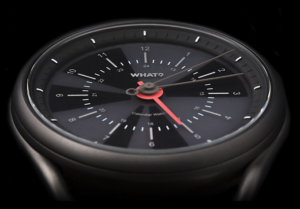The last few years I have grown to love Kickstarter. I think many Americans have become interested in it for so many different reasons. Some like seeing new products and new ideas. Some like to see new businesses start. For me I get a lot of inspiration from seeing new products and businesses beginning.
If you don’t know what Kickstarter is, let me give you a quick description.
Kickstarter is a website for crowdfunding. Project creators post their project which can be anything: a physical product, software, video game, movie, music album, etc. The project creator sets a goal for how much money they need in order to launch their project. If they reach their goal or more, they take the money and try to deliver on their project. The project creator also creates a list of rewards to give to those who pledge to the project. People who pledge to the project are called backers.
But since the beginning there has been a fair amount of controversy on Kickstarter. This controversy has led to a lot of people becoming very cynical and skeptical about projects on Kickstarter.
The problem starts when the project is fully funded, but the creator either takes an enormous amount of time to delivery (years in some cases) or they don’t deliver at all. Combine that with a few scams where project creators have intentionally created a fake product in order to take the money and run. Many people are justified in being a little skeptical. There have definitely been some bad campaigns and bad project creators.
One of the most disappointing projects to me was Kolstom Carbon Fiber Sunglasses. They promised a pretty cool looking pair of sunglasses made of carbon fiber. At the time I really liked carbon fiber and thought the glasses looked amazing. Fortunately for me I didn’t back the project. One big reason was because I have used and seen carbon fiber before, and from the pictures I could tell that the glasses used in the Kickstarter project were not made of real carbon fiber. It appears to me that they took a vinyl sticker and wrapped it around a pair of regular plastic glasses. They ended up raising just over $80,000 but did not delivering anything.
The thing is, with a little research and understanding of product design, it is not hard to see through a lot of the bad projects.
Many of the projects don’t have real prototypes. They make great marketing videos and even fake the product, but you have to be very meticulous when watching the videos. One key is to make sure they have a real life, functional prototype. Better yet, make sure they already have a production run finished.
Sometimes it can be hard to determine whether a prototype is real from the videos and pictures, especially if you don’t have engineering and design experience. If you ever see a project and you are curious if the prototype is real, feel free to email me and I will give you my opinion.
One other way to help weed out some of the bad projects is to research the founders and their history. If they have created products and delivered then they are less likely to oversell their Kickstarter.
One example of this is a recent smart watch that was on Kickstarter called What Watch?. I wrote a blog post about it a few weeks back. This watch is not the first product that What Watch? has produced and sold. If you go to their website, you can see that they have other watches for sale. This is a huge indicator of experience and expertise on designing and manufacturing a product.
Overall I really like Kickstarter. As with most things on the internet, you still need to be careful with what you support and who you give your money. With a little research and discernment, it shouldn’t be too hard to determine what are good projects to back.



[…] know how Kickstarter and Indiegogo work. I would encourage you to go read the article I wrote on Kickstarter awhile back. I like Kickstarter and Indiegogo a lot. But, failures like this really don’t […]